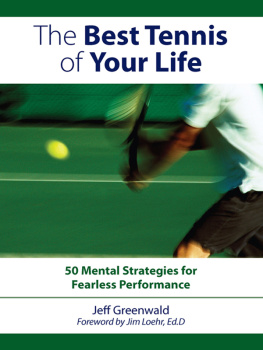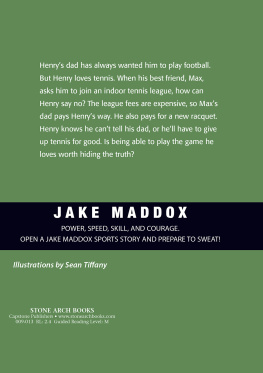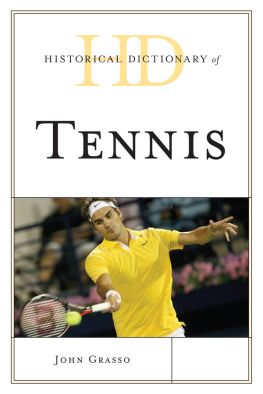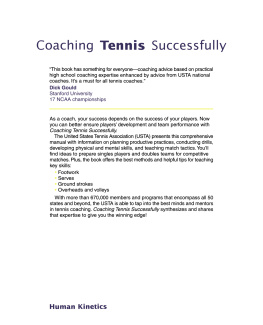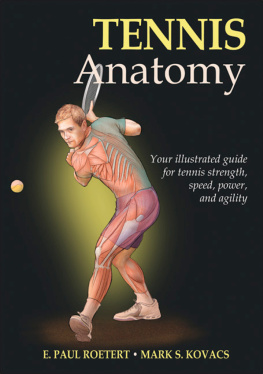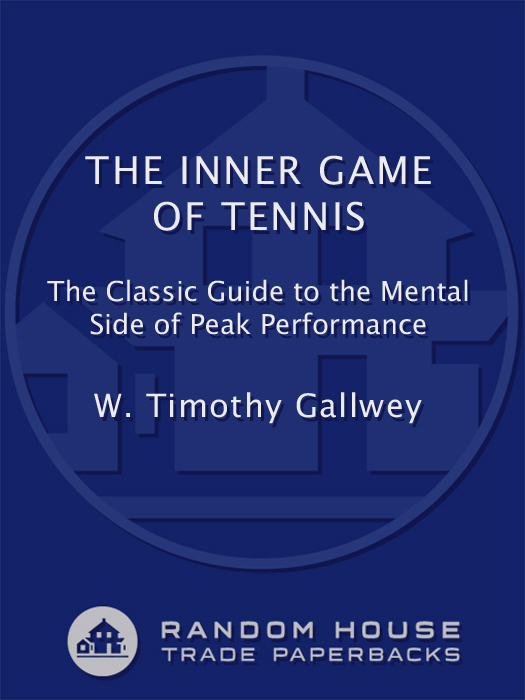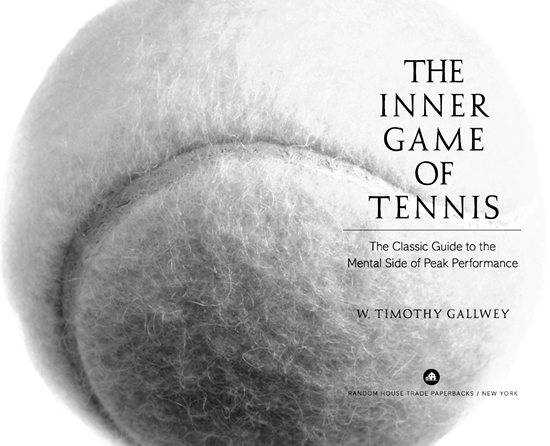A LSO BY W. T IMOTHY G ALLWEY
The Inner Game of Golf
Inner Skiing (with Robert Kriegel)
Inner Tennis
The Inner Game of Music (with Barry Green)
The Inner Game of Work
for my mother and father,
who brought me to the Game,
and for Maharaji,
who showed me what Winning is
What is the real game?
It is a game in which the heart is entertained, the game in which you are entertained.
It is the game you will win.
M AHARAJI
FOREWORD
P ETE C ARROLL
Head Football Coach, USC Trojans
The 2005 National Championship game was a great stage for the University of Southern California Trojans. We had encountered many different challenges in the years leading up to this classic match-up. Billed as the Game of the Century, top-ranked USC and second-ranked Oklahoma would compete in the nationally televised FedEx Orange Bowl in front of a record-setting audience. What a night for players, coaches, and fans to celebrate the game of football on the greatest stage in college sports.
The game would be illustrated in a physical matchup of some of the greatest college athletes in the country. Whereas the game and the field would be highlighted by athletic prowess and memorable playmaking, a much more subtle battle would be waged in the minds of those very same players. The mental aspects contributing to this great physical performance would be crucial to the eventual outcome.
Tim Gallwey has referred to these contributing mental factors as the Inner Game. These athletes must successfully deal with the mind as they prepare to deliver top-flight performances. Coaches and athletes on all levels are confronted with this mental aspect regarding performance. They must clear their minds of all confusion and earn the ability to let themselves play freely.
Introduced to The Inner Game of Tennis as a graduate student years ago, I recognized the obvious benefits of Gallweys teachings in regards to performance in individual sports. As I grew more familiar with the benefits of performing with a quieted mind. I started to cement the principles of trust and focus as characteristics that could also benefit teams.
The Inner Game is intrinsically connected to all facets of our program. The confidence necessary for performing at a championship level over long periods of time can only be developed on the practice field through repetition. Disciplined practice enables our players to develop trust in our coaching and in themselves. They also gain the confidence that allows them the ability to focus, regardless of circumstances or surroundings.
Whether we are preparing for an inter-squad scrimmage or the National Championship Game, these principles lie at the foundation of our program. Once you understand the principles of the Inner Game, you will be able to quiet your mind, focus clearly, and truly play the game.
PREFACE
Z ACH K LEINMAN
Coach: Sports and Life
I have trusted Tim Gallweyand the teachings of The Inner Game of Tennissince before we met. This trust started in 1974, when I read this book that is in your hands right now. He confirms that the path I am on is true, and that I could go deeper. And I do. Its not about the tennis, he reminds me. Its not about the win or the loss; if were here to experience, then we are free. I still like winning more than losing. And after thirty years, he still shows me how to have faith and he has knighted me an Inner Game instructor. Tim lives his work and, as my mentor and a role model, he has entrusted me to see into and participate with him as he continues to learn. I appreciate him especially for this: He is a source of unconditional interest.
One day, he was even more right than usual. It was the last day of the first Inner Game workshop for tennis teachers. Though I had assisted him at an Inner Tennis clinic a few months earlier, during workshop week I had my first private lesson (thirty people were watching) with Tim. He suggested Authority. Express authority. Become the author of your own shot, he kindly requested. I found a presence within me who was able to project a new and accessible vision into the shots. Immediately my teaching and playing gained an added dimension, but not just from the authority; it could be anything I pictured. I became the writer, the creator of the next point, my life.
On Friday, December 10, 1976, at about 2:30 in the afternoon, Tim Gallwey changed my life when he so intuitively suggested, Zach, go home. Go and teach, then come back for the next workshop.
No way, I responded with newfound strength and surety. Then a stronger instinct with me said, Im here. Ill help, assist, and learn.
Tim smiled.
I stayed. But what really made me stay? Theres a magic I feel being on the court, teaching and learning with Tim. His thoughtful, simple, provocative approach inspires the best out of me as a teacher, player, and person.
Since that life-altering moment of expressing a newfound authorship, I trusted and continue to trust Tims instincts. I am still in Los Angeles, working with and expanding the Inner Game process through clinicsgroup and private instruction on tennis courts and golf courses, and in music and billiard halls. And I continue to learn and grow and practice with Tim almost dailyon and off the courtexpressing our inner and outer games.
CONTENTS
FOREWORD by Pete Carroll,
Head Football Coach, USC Trojans
PREFACE by Zach Kleinman,
Coach: Sports and Life
ONE
TWO
THREE
FOUR
FIVE
SIX
SEVEN
EIGHT
NINE
TEN
INTRODUCTION
Every game is composed of two parts, an outer game and an inner game. The outer game is played against an external opponent to overcome external obstacles, and to reach an external goal. Mastering this game is the subject of many books offering instructions on how to swing a racket, club or bat, and how to position arms, legs or torso to achieve the best results. But for some reason most of us find these instructions easier to remember than to execute.
It is the thesis of this book that neither mastery nor satisfaction can be found in the playing of any game without giving some attention to the relatively neglected skills of the inner game. This is the game that takes place in the mind of the player, and it is played against such obstacles as lapses in concentration, nervousness, self-doubt and self-condemnation. In short, it is played to overcome all habits of mind which inhibit excellence in performance.
We often wonder why we play so well one day and so poorly the next, or why we clutch during competition, or blow easy shots. And why does it take so long to break a bad habit and learn a new one? Victories in the inner game may provide no additions to the trophy case, but they bring valuable rewards which are more permanent and which can contribute significantly to ones success, off the court as well as on.
The player of the inner game comes to value the art of relaxed concentration above all other skills; he discovers a true basis for self-confidence; and he learns that the secret to winning any game lies in not trying too hard. He aims at the kind of spontaneous performance which occurs only when the mind is calm and seems at one with the body, which finds its own surprising ways to surpass its own limits again and again. Moreover, while overcoming the common hang-ups of competition, the player of the inner game uncovers a will to win which unlocks all his energy and which is never discouraged by losing.



